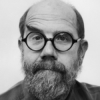Chuck Close

Chuck Close
Charles Thomas "Chuck" Closeis an American painter/artist and photographer who achieved fame as a photorealist, through his massive-scale portraits. Close often paints abstract portraits, that are shown in the world's finest galleries. Although a catastrophic spinal artery collapse in 1988 left him severely paralyzed, he has continued to paint and produce work that remains sought after by museums and collectors. Close lives and works in Bridgehampton, New York and Long Beach, NY and New York City's East Village. His first...
NationalityAmerican
ProfessionPhotographer
Date of Birth5 July 1940
CityMonroe, WA
CountryUnited States of America
Every idea occurs while you are working. If you are sitting around waiting for inspiration, you could sit there forever.
Get yourself in trouble. If you get yourself in trouble, you don't have the answers. And if you don't have the answers, your solution will more likely be personal because no one else's solutions will seem appropriate. You'll have to come up with your own.
I learned you could suffer a terrible tragedy and still be happy again.
In life you can be dealt a winning hand of cards and you can find a way to lose, and you can be dealt a losing hand and find a way to win. True in art and true in life: you pretty much make your own destiny. If you are by nature an optimistic person, which I am, that puts you in a better position to be lucky in life.
If it looks like art, chances are it's somebody else's art.
There's something Zen-like about the way I work - it's like raking gravel in a Zen Buddhist garden.
I discovered about 150 dots is the minimum number of dots to make a specific recognizable person. You can make something that looks like a head, with fewer dots, but you won't be able to give much information about who it is.
I love sculpture, and minimal sculpture is really my favorite stuff, but I wasn't very good at it, and I don't think in a three-dimensional way.
I only use three primaries, so the nice thing is I can't have favorite colors.
The camera is objective. When it records a face it can't make any hierarchical decisions about a nose being more important than a cheek. The camera is not aware of what it is looking at. It just gets it all down.
I never said the camera was truth. It is, however, a more accurate and more objective way of seeing.
There are so many artists that are dyslexic or learning disabled, it's just phenomenal. There's also an unbelievably high proportion of artists who are left-handed, and a high correlation between left-handedness and learning disabilities.
All the fingerprint paintings are done without a grid.
Any artist who goes to Las Vegas is an idiot as far as I am concerned. Whoever goes to Las Vegas can stay in Las Vegas.